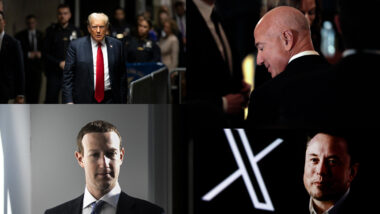Die Electronic Frontier Foundation hat zusammen mit anderen US-Bürgerrechtsgruppen „Fair Use Principles for User Generated Video Content“ aufgestellt. Damit reagiert man auf die Initiative der Unterhaltungsindustrie aus der letzten Woche, die sich für eine stärkere Filterung von urheberrechtlichen Materialien auf Video-Plattformen ausgesprochen haben: Fair Use Advocates Issue Principles for Protecting Online Videos.
As part of their own „UGC Principles“ effort announced last week, video hosting services and major media companies emphasized the importance of accommodating fair use. The „Fair Use Principles“ released today propose detailed steps that content owners and video hosting services can take to make good on that promise.
„As video hosting services begin to implement copyright filtering technology, it is time to discuss concrete strategies to protect creative videos that remix material from movies, TV and popular music,“ said EFF Senior Intellectual Property Attorney Fred von Lohmann. „Our aim is to speak for the interests of the millions of amateur creators who are fueling the popularity of YouTube and similar sites.“
Fair uses have been mistakenly caught up in copyright enforcement dragnets in the past. For example, earlier this year blogger Michelle Malkin’s video about rapper Akon was erroneously taken down from YouTube after Universal Music Group (UMG) claimed copyright infringement. In that case, two excerpts from Akon music videos were embedded in a longer commentary about the rap star. Although UMG ultimately admitted its mistake, automated content filtering raises the possibility that commentaries like this might be blocked preemptively in the future.
With cases like this one in mind, „Fair Use Principles for User-Generated Content“ describes six steps that service providers and copyright owners should take to minimize damage to fair use during copyright enforcement efforts. One key principle is „three strikes before blocking“ — verifying that the video matches the video of a copyrighted work, that the audio matches the audio of the same work, and that nearly all of the clip is comprised of that single work. In addition, if a video is blocked by a content filter, the creator should be given an opportunity to dispute the filter’s determination.
Mehr Infos




0 Ergänzungen
Dieser Artikel ist älter als ein Jahr, daher sind die Ergänzungen geschlossen.